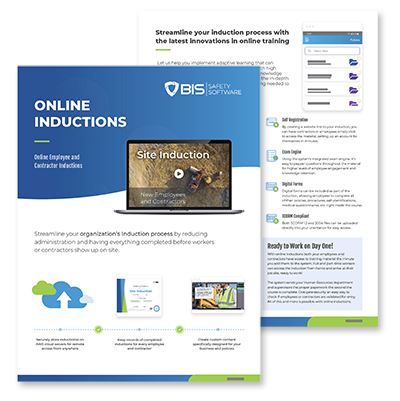Have you ever walked the same route so many times that you stop noticing the details along the way? That’s a bit like complacency in the workplace. It’s when familiarity breeds a comfort that can dim our alertness to potential hazards or mistakes. In UK workplaces, where safety and efficiency are paramount, letting our guard down isn’t just a minor slip—it can be a major mishap. So, let’s chat about why shaking off complacency is crucial, not just for keeping our tea hot and our biscuits crunchy, but for keeping everything running smoothly and safely.

Understanding Complacency
So, what exactly is complacency? Think of it as the sneaky little bug that bites when we get too comfortable or overly confident in our daily routines. It’s that sense of automatic pilot you slip into when performing tasks you’ve done a thousand times. You might think you can do them with your eyes closed—and that’s precisely where the problem lies.
Signs of Complacency:
- Skipping Steps: Ever skipped a step in your tea-making process because you’ve made a million cups? It’s like that, but with tasks that might need a bit more attention than a kettle.
- Overlooking Details: Missing small changes or errors that you would usually catch if you weren’t so used to the task at hand.
- Ignoring Protocols: Bypassing those ‘pesky’ safety checks because nothing has gone wrong before, right?
Psychological Roots:
- Routine: Humans are creatures of habit, and when tasks become routine, our brains switch to energy-saving mode, not fully engaging with the details.
- Overconfidence: When we’ve done something successfully many times, we start to believe that success is guaranteed.
Understanding these aspects helps us see why it’s not just about ‘not paying attention.’ It’s a subtle, often unconscious shift in how we engage with our everyday tasks. And in the next sections, we’ll explore how to snap out of it and keep our workplaces as sharp and attentive as a new pin.
A Guide to Workplace Complacency
For those keen to dive deeper into the mechanics of complacency and explore comprehensive strategies to combat it, our whitepaper is a treasure trove of insights. This document elaborates on:
· Detailed analyses of complacency’s causes and effects within different industries.
· Advanced techniques for diagnosing and addressing complacency at its roots.
· Statistics underlining the hazardous nature of complacency.
The Consequences of Complacency
Let’s paint a picture of what happens when complacency takes root. Imagine you’re working on a machine you’ve operated a thousand times; it’s almost second nature. One day, because it’s just another regular day, you skip a pre-operation check. Nothing happens, right? Until the one day something does. Suddenly, you’re dealing with a machine malfunction, or worse, an injury. These incidents aren’t just hypotheticals. In workplaces across the UK, small oversights can lead to big issues:
- Safety Hazards: Minor lapses can result in accidents, sometimes serious ones, affecting both health and morale.
- Quality Slips: Product defects increase when attention to detail decreases, impacting customer satisfaction and business reputation.
- Productivity Losses: Efficiency takes a hit when equipment breaks down or errors need correcting, leading to downtime and financial losses.
The statistics back this up. For instance, the Health and Safety Executive (HSE) reports that a significant number of workplace injuries can be attributed to ‘routine’ tasks where safety measures were overlooked. It’s clear: the ripple effects of complacency can be costly and far-reaching.

Historic Incidents Caused by Complacency
Complacency has caused many issues over the years including some of the worst disasters in history. But don’t take our word for it, here’s a list of notable accidents where complacency was identified as a significant factor contributing to the incidents:
- Chernobyl Nuclear Disaster (1986) – The world’s worst nuclear disaster occurred partially due to operators conducting a test without adhering strictly to safety protocols, underestimating the reactor’s volatile nature.
- Space Shuttle Challenger Explosion (1986) – The disaster was partly attributed to the normalization of deviance, where repeatedly ignored concerns about the O-ring seals in shuttle boosters became commonplace.
- Deepwater Horizon Oil Spill (2010) – This environmental catastrophe in the Gulf of Mexico highlighted multiple failures, including overlooked safety practices and underestimated risks associated with deepwater drilling.
- Überlingen Mid-Air Collision (2002) – Complacency in adhering to air traffic control protocols contributed to the tragic collision of two aircraft, due to a combination of tiredness, understaffing, and reliance on automatic warning systems.
- Amagasaki Rail Crash (2005) – In Japan, a train derailed and crashed into an apartment building, partially due to the driver’s rush to make up for a 90-second delay, ignoring safety speeds and procedures.
- King’s Cross Fire (1987) – A small fire escalated into a major disaster at King’s Cross St. Pancras tube station in London, partly because the initial response was hampered by a lack of concern for small fires previously managed without serious incident.
- Texas City Refinery Explosion (2005) – At one of the largest refineries in Texas, USA, outdated equipment and ignored safety measures led to a massive explosion, highlighting a culture of cutting costs and ignoring risks.
- Montara Oil Spill (2009) – Off the coast of Australia, poor oversight and procedural complacency led to one of the country’s worst oil disasters.
These incidents underscore the critical importance of maintaining high safety standards and the dangers of becoming complacent, even in routine operations. They serve as stark reminders that vigilance and adherence to protocols are essential in preventing accidents.
High-Risk Sectors and Roles
Some sectors and roles in the UK are particularly susceptible to the complacency trap. For example:
- Manufacturing: Operators performing repetitive tasks may become desensitized to the risks of heavy machinery.
- Healthcare: Experienced medical professionals might skip standard checks under pressure, leading to medical errors.
- Transportation: Long-haul drivers facing monotonous routes might overlook road safety norms or vehicle maintenance.
Recognizing these high-risk areas allows organizations to focus their anti-complacency strategies where they’re needed most, ensuring that safety and vigilance are maintained across all levels of operation.
Strategies to Combat Complacency
Breaking the complacency cycle requires proactive measures. Here’s what businesses can do to keep their teams alert and engaged:
- Regular Training: Keep knowledge fresh and skills sharp with ongoing training sessions that emphasize the importance of vigilance.
- Routine Audits: Scheduled checks can help catch issues before they become problems, ensuring that complacency doesn’t creep in.
- Encourage Feedback: Create an open environment where employees can share their observations or concerns about potential oversights without fear of reprimand.
- Change Routines: Alter workflows periodically to keep tasks from becoming too routine. This can help maintain focus and attention to detail.
- Reward Vigilance: Recognize and reward employees who consistently adhere to safety protocols and contribute ideas for improving procedures.
These strategies not only enhance safety but also foster a culture of continuous improvement and attentiveness.

























